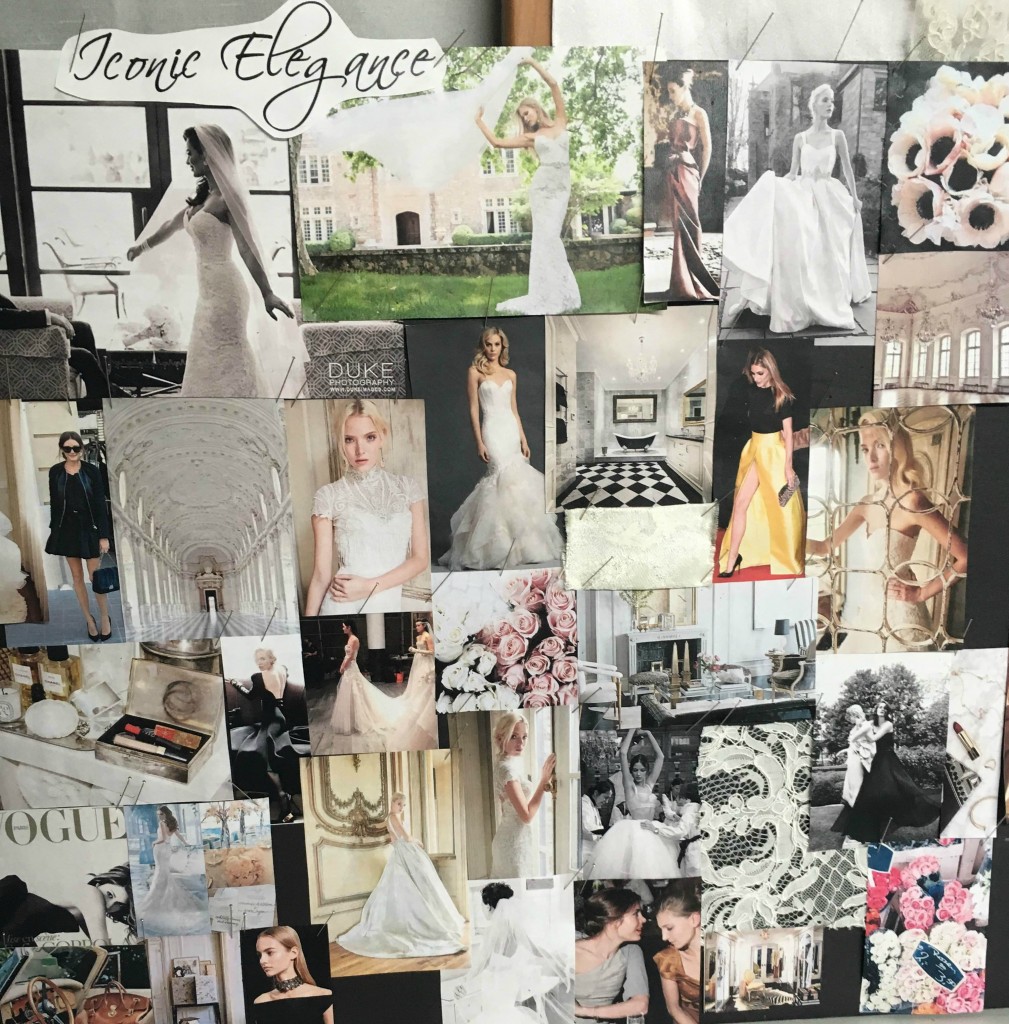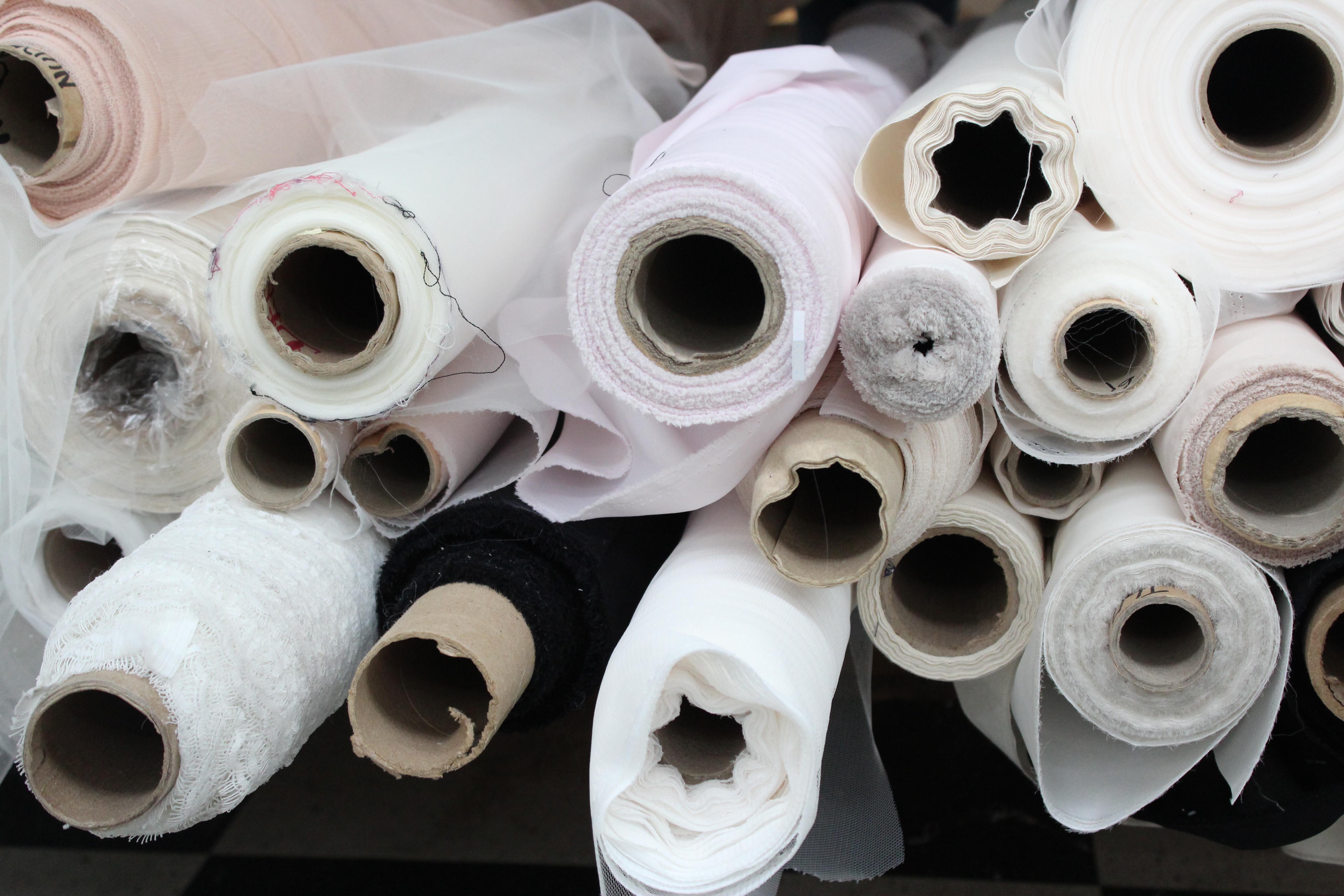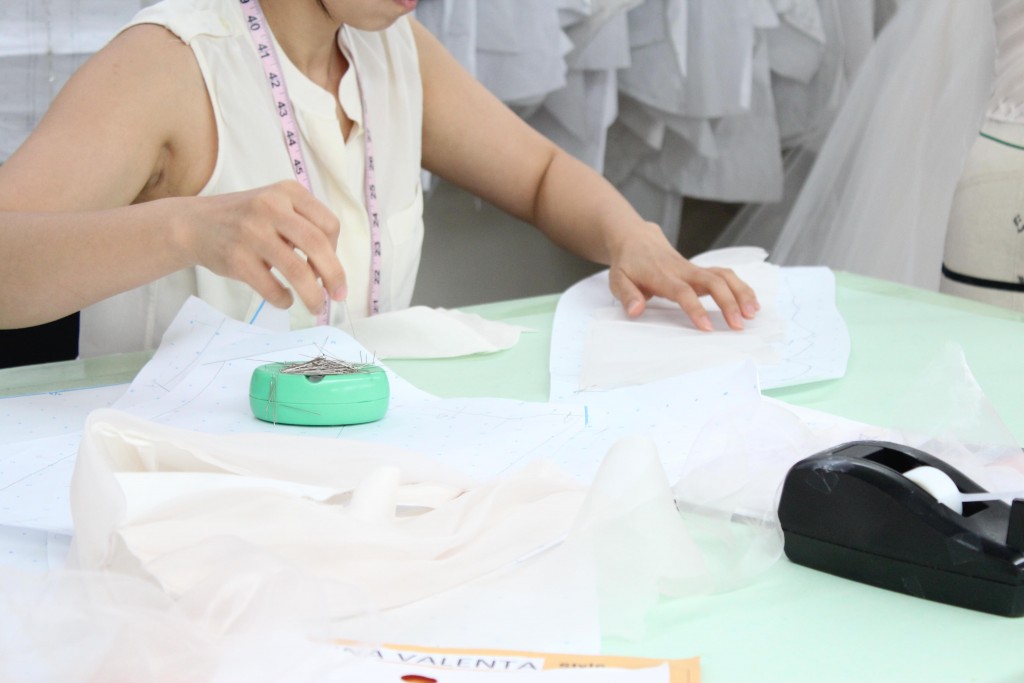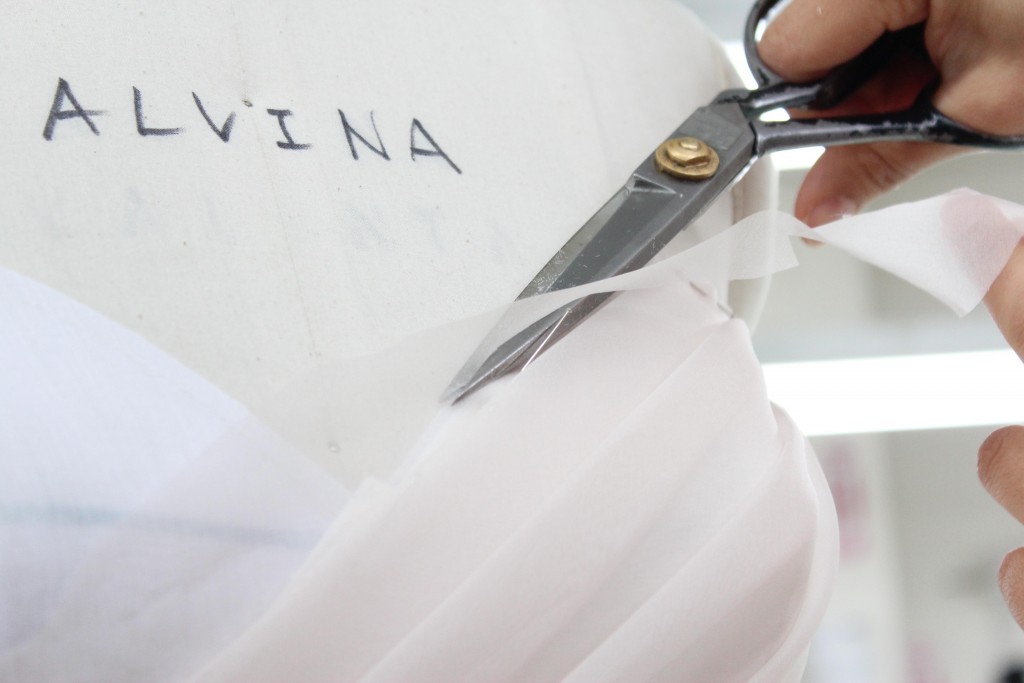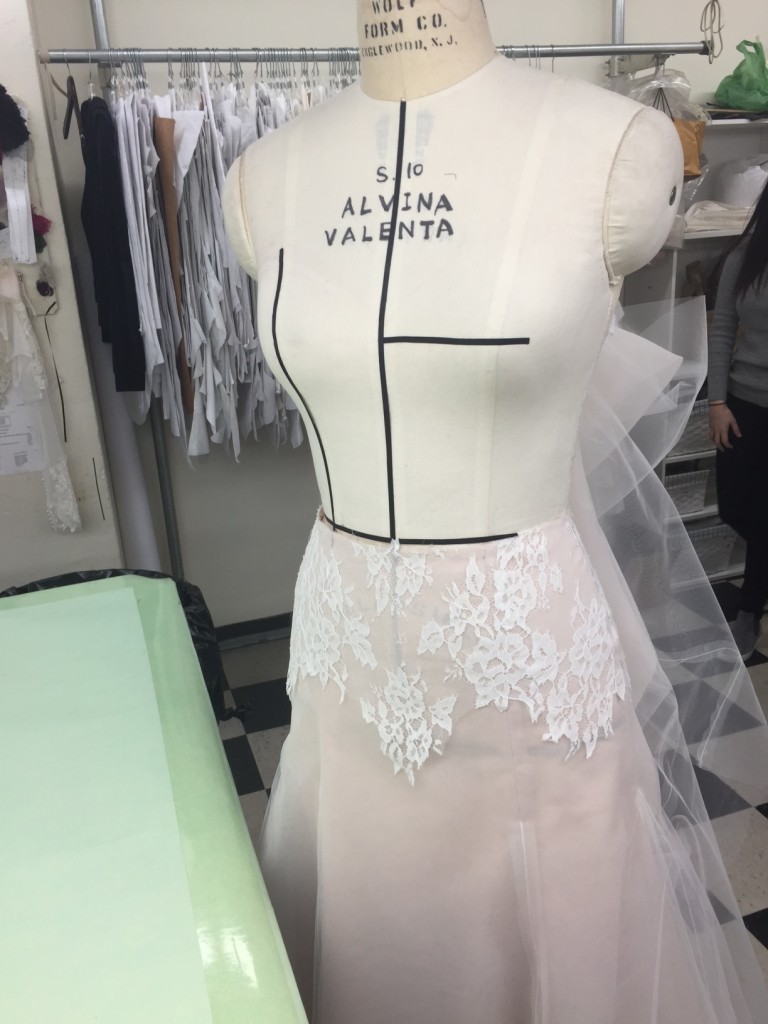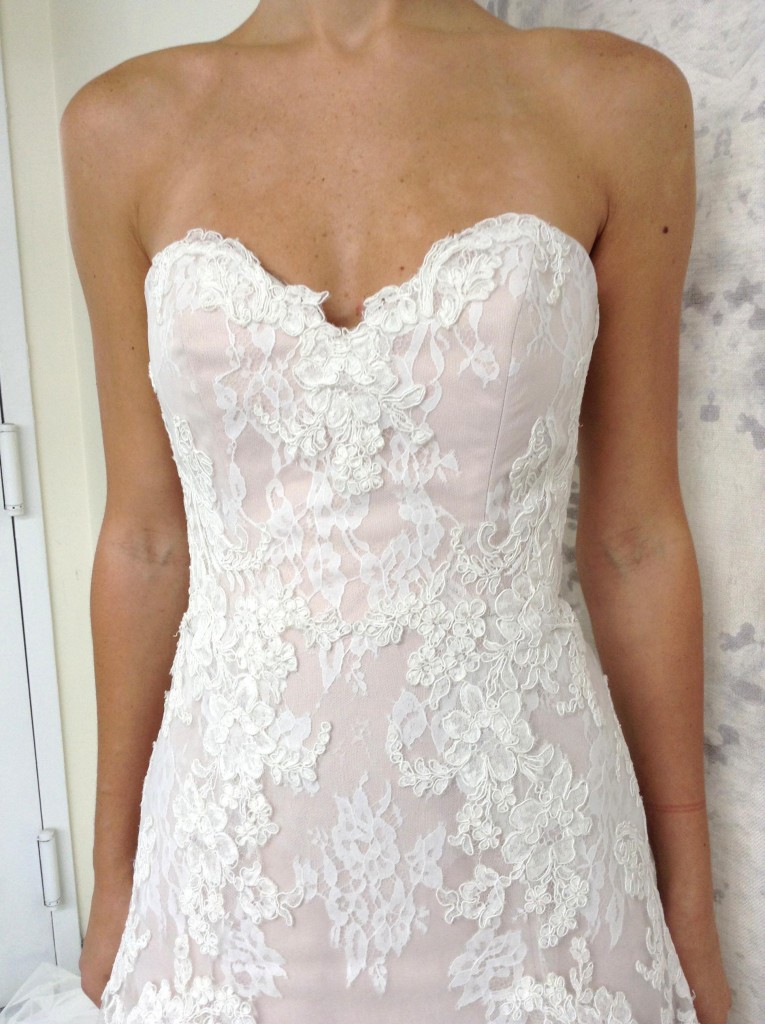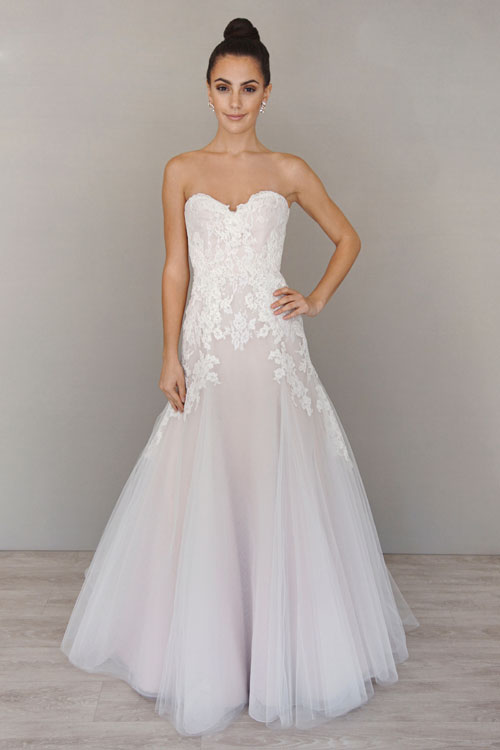Sketch to the Dress with Alvina Valenta

Although it may seem like it, the perfect wedding dress doesn't just pop out of your dreams. It's the result of a designer delicately weaving inspiration together with hard work. To give us better insight of how a wedding dress is made start to finish, Jessica Williams, who designs both the Alvina Valenta and Ti Adora collections, brings me into her New York City design studio. So come behind the seams with us and take a look at the steps involved in creating the perfect Alvina Valenta bridal gown.
Step 1. Inspiration boards and sketches
At the beginning of each season, Jessica takes in how the collection has evolved so far, what is happening in the fashion world, and ideas and moods she has been thinking about exploring deeper. She uses visualization and inspiration boards to help her brainstorm. Then from there, it's time to sketch! She always returns to the personality of the Alvina Valenta brides -- women who want to embody an iconic elegance, a dreamy romance or an effortlessly luxe glamour for their wedding day.
Step 2. Choosing the fabric
Deciding the fabric of the gown is one of the most important steps, as it forms the aesthetic and character of the gown. There are many fabrics to choose from in the bridal industry, with some of the most popular being: chiffon, organza, tulle, satin, lace and taffeta. For Jessica, each dress is its own entity; her fabric decisions are based on the personality of the bride she has in mind, the target pricepoint, and sometimes, the fabric is the inspiration for the gown. Jessica believes that luxury is in the details, and opts for quality materials like silk organzas, silk-faced satins, and silk taffetas. A signature fabric in Alvina Valenta gowns is the beautiful Alencon lace, which Jessica sources from French lace mills.
Step 3: Pattern Maker and Jessica work together
Jessica gives her sketch to her pattern maker, Angela, and they work together daily on making a "muslin" sample of the dress before cutting in the correct fabrics. For dresses with more structured silhouettes a sample dress is made from muslin (lightweight cotton fabric, very inexpensive). This allows Jessica to more clearly visualize the gown without using the expensive silks. When creating a dress consisting of various fabrics and colors in Jessica's signature layering style, they often use the actual fabrics to mock up a portion of the dress and then fine-tune to ensure optimal color and movement.
Step 4: Fabric is cut
Once the pattern is perfected, it is given to the cutter. The cutter will cut the chosen fabrics for the dress based on the paper pattern.
Step 5: The gown is sewn
Once the fabric is cut it is handed to the seamstress. The seamstress will then sew the pieces of fabric together to create the dress. As you can see, it's starting to come together!
Step 6: Model fittings
A model is then brought into the studio to try on the gown and Jessica will check for any alterations needed, and sometimes even decide to evolve the dress further. There are typically three fittings before the gown is approved for runway.
Step 7: Gown complete
Voila! We have a beautiful A-line gown with Alencon lace placed throughout. This gown is style #9607 and will be in stores early Spring 2016. Watch this dress on the runway by clicking here.

